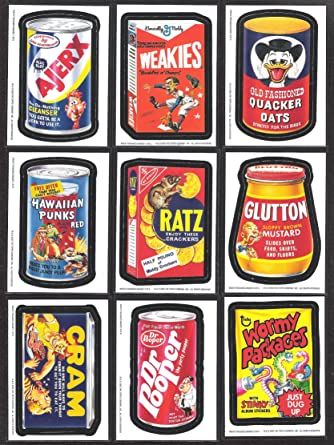
 Tomorrow’s Test: Commas, in-class reading, Giver, Husker Du. Preview 19
Tomorrow’s Test: Commas, in-class reading, Giver, Husker Du. Preview 19
Art Spiegelman: ‘Banning books never works. It ignites interest in the forbidden’
Excerpt.
…To narrate the unspeakable in Maus, which was first published in Raw, the magazine that he and his wife Françoise Mouly published in the 1980s, Spiegelman chose to use animals as characters. The Jews were mice, the Poles were pigs (there were also a couple of French characters who were dogs). He recalls how he got the idea for it. “And it was about just drawing anthropomorphic characters and I was having trouble finding a way to do this that would be meaningful, until I saw in a film class of somebody who was really my good friend, a professor of cinema. So I went to this film class and he was showing racist animated cartoons. You know, the minstrel kind of stuff. Some humans depicted as monkeys. And then he showed the sound cartoon Steamboat Willie [1928], with Mickey Mouse. And so after showing these race caricatures, he shows Mickey Mouse who was not the nice suburban mouse of the ’50s and ’60s who grew up to become an international logo. And then I thought I really have a way in because I will do a comic about race in America, with these oppressed black mice by the Ku Klux Cats.”
For a few days he was sure that he’d had a really brilliant idea… until he realized that it would probably be misunderstood or viewed as racist, or in the best of cases, as the product of the damaged mind of a white liberal underground cartoonist. “Then I realized I could tell the story of my parents, and my family’s bloody run, using that idea. So I found this universal metaphor of racial oppression.” He also found inspiration in George Orwell’s classic anti-authoritarian tale Animal Farm, which Spiegelman notes gets often included in the list of banned books.
Maus gave him problems from the start. When he published it, “there were Jewish organizations very unhappy because the Jews were shown as meek little mice hiding only, not having a resistance. ”Many people failed to understand that behind the zoomorphism there were people wearing masks. “By the time you read the whole book, it’s clear that Maus is constructed as a self destructing metaphor. It’s a stupid metaphor. It’s Hitler’s metaphor. So I was working with it to demystify.”
Part one of the two-part graphic novel opens with a quote by the Führer: “The Jews are undoubtedly a race, but they are not human.” Claude Lanzmann, director of the 1985 documentary film Shoah, approved Spiegelman’s strategy. “Or at least it looked like he liked my work,” notes Spiegelman.
The book also ran into trouble in Russia (where it was banned as “Nazi propaganda”) and in Poland, where the project to publish it was cut short several times, Spiegelman recalls. Finally it was Piotr Bikont, a journalist from the Polish newspaper Gazeta Wyborcza, who dared to found a publishing house and put it into circulation. As a reward for his daring, a book-burning session was organized for him at the door of the newspaper, and Bikont came out to greet the demonstrators from the balcony behind a pig mask.
Spiegelman is amazed that this kind of thing is still happening: four days after the ban of his comic book made global headlines, a pastor named Greg Locke organized a book-burning session in Nashville, Tennessee that included books from the Harry Potter and Twilight series, which were described as “satanic.” The event was streamed on Facebook.
“So they had a big book-burning and it was published next to a picture of a book burning in Germany in 1933. And the only real difference between the two is that one was in color. That person is an idiot, really terrible person, not just an idiot, but a malevolent idiot that thinks that Covid was a hoax, and more people, as a result, got to die. He also believes that Trump won the election. Those people don’t realize that it is ineffective, unless you’re willing to go all the way after burning the books, and burn the writers and readers who are involved with these books.”
Listening Exercise: Art Spiegelman interview excerpt. (1:30-3:07)
Questions to listen for answers for. Yes it will be on the test.
- What do you think the opening quote about the 5000 pound mouse means?
- How did Spiegelman feel about Maus being taught everywhere in schools?
- According to Spiegelman, what is the real purpose of Maus?
- Why does he say comics are an especially good form for showing memories?
- What do you think the word ubiquitous means?
“Commas, 2/17.” a) Show where the commas go. b) Give the Rule.
There is one that needs no commas. Write OK for that one.
- If you don’t already know today we’re going to learn to cut and paste kids!
- Lloyd the llama author of a best-selling book and renowned rocket scientist was awarded the prestigious Nobel Prize for Poetry.
- The llama that she rode to the wedding looked very pretty.
- The llama jerky was soft but satisfying.
- Because the llama missed the bus he was late for his very important appointment.
- Please no smoking food or beverages in the classroom!
- Most of the time travelers worry about their llama getting lost.
- Sid waited for the llama to arrive so he could get a ride in his hot new Camaro.
“Giver 17/18.”
- Now that Jonas is experiencing deep feelings like anger and sadness, he realizes that his family doesn’t really have any feelings at all. a) True b) False
- Why is Jonas disturbed by the game his friends are playing? a) He remembers the thirsty kid from his dream of war. b) He thinks it isn’t fair. c) He doesn’t understand the rules. d) He thinks it’s dangerous. e) NOTA
- Why does Jonas feel overwhelmed with feelings of loss? a) Asher told him he ruined the game. b) Fiona refused to take a ride with him. c) He doesn’t really like his old friends any more. d) His friends can’t love him back. e) NOTA
- How does The Giver describe the previously selected Receiver who failed? a) A remarkable young woman b) Self-possessed c) Serene d) Intelligent e) All of the above f) NOTA
- Which of these memories of pain did The Giver not give to Rosemary? a) Physical b) Loss c) Loneliness d) Poverty e) He gave her all of them.
- Rosemary was not qualified to be the new Receiver so they released her. a) True b) False
- When Rosemary was released, and her memories overwhelmed the Community, The Giver didn’t help them because he was too overwhelmed himself. a) True b) False
- What idea of Jonas’s intrigues The Giver? a) Jonas swimming. b) Changing the rules so The Receiver can no longer ask to be released. c) Helping the whole community the way he’s helped Jonas. d) Giving memories to Gabriel. e) NOTA
Read aloud Chapter 19-20. Our CONFLICT FINALLY BEGINS!
LINK FOR ONLINE VERSION OF GIVER: https://fliphtml5.com/fpkep/ghvp/basic
Time? Begin…